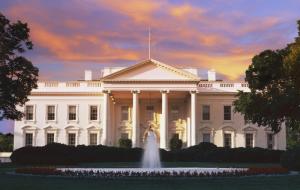Clean Power Plan Formalized

It’s official: The Obama administration has formalized its Clean Power Plan, which now requires 32 percent carbon emissions reductions by 2030, up by two percentage points from the original plan released last summer. Next phase: outsmarting the opponents’ lawyers to achieve implementation by 2022, a mere two years later than the first draft.
Besides those key differences, the formal plan released Monday has three “building blocks” from which the states can choose to comply: 1) improving heat rates for coal-fired steam generators, 2) switching out higher-emitting steam units for existing but lower-emitting combined-cycle combustion turbines fired by natural gas, and 3) increasing the use of renewable energy.
A fourth building block proposed earlier that would have required greater reliance on energy efficiencies by end-use electric customers has been deleted, but the administration says that states can still incorporate such strategies – and will be expected to do so.
States, and the industries they embody, can also set up trading platforms to exchange carbon credits amongst themselves. Those able to meet emissions requirements can sell credits to those unable to do so. It may be cheaper, though, to install new technologies than to buy credits.
Meanwhile, the plan says that coal plants can still make the cut if they incorporate advanced strategies such as carbon capture and storage, as well as the gasification of coal. Given that those tacks are so expensive, they are not realistic; utilities could simply burn natural gas in a combined-cycle turbine for a lot less money.
Coal groups are expected to team up with sympathetic lawmakers to thwart the plan, while their attorneys work to mire it in the courts. Already, at least 12 coal-dependent states have filed suit against the regulation, contesting the EPA plan under the general concept that it will usurp private property rights.
Further, new nuclear plants are not included in the final plan, although administration officials have said that they will count toward carbon reductions given that they release no carbon emissions. EPA also says that existing plants that improve their productivity through “uprates” will go toward carbon cuts.
"Based on our preliminary review, the final rule appears to require larger carbon reductions than the proposed rule, and places a greater emphasis on mass-based compliance approaches," says Marvin Fertel, head of the Nuclear Energy Institute.
"Those two factors alone should drive increased recognition of the value of existing nuclear power plants," he adds.
States need to submit their compliance strategies by 2018, which is two years later than initially conceived. The aim here is to ensure that electricity reliability is not jeopardized, and to head-off any such criticisms from opponents.
“States now have a blueprint for building their clean energy economy,” says Bob Keefe, executive director of Environmental Entrepreneurs, a non-partisan group of business leaders and investors. “It is up to governors to put this plan into action if they want to create jobs and drive economic growth, and help their states environment as well.”
“An extra two points may not sound like much, but they lead to a 6.7 percent more ambitious target,” adds Environmental and Energy Study Institute Executive Director Carol Werner, referring to the increase from 30 percent to 32 percent in carbon cuts by 2030. “The administration is clearly trying to push other countries to be similarly ambitious in their carbon reduction goals ahead of the climate change talks in Paris at the end of this year.”
Werner continues to say that she is not alarmed by EPA’s decision to give states two more years to comply with the plan – from 2020 to 2022. While she does fear indefinite delays, she says the two years will give states time to be “creative” so that they can invest for the “long haul” in green energy and energy efficiency.
Ken Silverstein is Editor-in-Chief of Public Utilities Fortnightly. He can be reached at ksilverstein@fortnightly.com. Twitter: @Ken_Silverstein
Lead image © Americanspirit | Dreamstime.com




